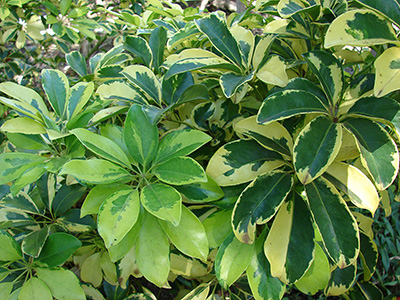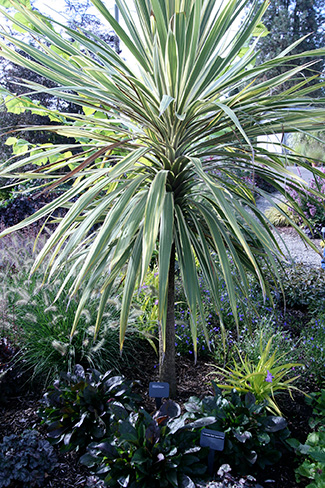Poolside Plants

It’s tricky finding plants for your poolside landscape. In a perfect world, they would look beautiful for most of the year without making a mess by dropping leaves, flowers, or seeds on the pool deck. These plants wouldn’t outgrow designated areas or spread over pool screens. Plus, they must be able to tolerate the occasional splash of pool water. It’s a lot to ask of a plant! But having the right landscape around a pool can add to the relaxing atmosphere and enhance the enjoyment of this unique space.
Here are our recommendations for some plants that we consider “bathing beauties.” While none of these plants can survive a deluge of chlorine or salt water and they all require some maintenance, we think the tropical beauty they provide is well worth the effort.
Bird of Paradise – This striking evergreen plant is a poolside classic, with blue-green foliage and showy orange and blue blooms that resemble a bird in flight. Its drought tolerance and pest resistance make it a favorite low-maintenance tropical plant. It will remain small if planted in partial shade and can tolerate a light spray of salt. And since it doesn’t tend to cause leaf litter, it’s ideal for planting next to pools and patios.
Hibiscus – With flowers that come in a rainbow of colors, hibiscus evokes images of a vivid tropical paradise. Individual flowers may be short-lived, but the plant will produce blooms over a long flowering season—nearly year-round in South Florida. Make sure to select a variety that is compact and dense if you are planting in a defined space. Also keep in mind that tropical hibiscus plants are sensitive to cool weather; the slightest cold wave can cause lower leaves to yellow and drop off.

Cordyline – Also called ti plant, colorful cordyline is perfect for creating a tropical landscape effect. It can be planted year-round in hardiness zones 10 – 11 and ranges in color from variegated light greens and pinks to very dark reds. If planted in sunnier locations, the leaf coloration is more pronounced.
Ginger (Alpinia zerumbet) – This variegated ginger has striped, yellow and green foliage and fragrant blossoms. Often called shell ginger, its pinkish-white flowers grow in clusters of what some think resemble seashells. As with all variegated plants, it grows less vigorously than its non-variegated, original form and is easier to keep within bounds. Shell ginger does well in partial shade, is easy to grow, and readily available at garden centers.
Dwarf schefflera - This evergreen shrub has attractive, dark green, glossy leaves that gently fan out into a rounded crown. It can be pruned over time into a small tree, perfect for a patio. In winter, dwarf schefflera displays brilliantly orange-yellow fruit.
Croton – This perennial evergreen shrub is known for its bold, tropical foliage. Croton (Codiaeum variegatum) comes in a wide variety of leaf shapes and colors including red, orange, yellow, pink, purple, green, and even white. They can grow up to 10 feet tall, but dwarf varieties are available that would be well suited to grow poolside. Crotons thrive in warm, humid weather and appreciate irrigation during dry spells. Frosts or freezes will damage them, but they quickly recover. For maximum croton color, plant in bright sunlight.
